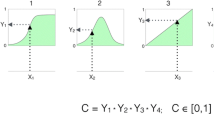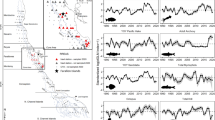ABSTRACT
Growing disillusion with the predictive capability of single species fisheries assessment methods and the realization that the management approaches they imply will always fail to protect bycatch species has led to growing interest in the potential of marine protected areas (MPAs) as a tool for protecting such species and allowing for rebuilding populations of target species and damaged habitat. Ecospace is a spatially explicit model for policy evaluation that allows for considering the impact of MPAs in an ecosystem (that is, trophic) context, and that relies on the Ecopath mass-balance approach for most of its parameterization. Additional inputs are movement rates used to compute exchanges between grid cells, estimates of the importance of trophic interactions (top-down vs bottom up control), and habitat preferences for each of the functional groups included in the model. An application example, including the effect of an MPA, and validation against trawl survey data is presented in the form of a color map illustrating Ecospace predictions of biomass patterns on the shelf of Brunei Darussalam, Southeast Asia. A key general prediction of Ecospace is spatial “cascade” effects, wherein prey densities are low where predators are abundant, for example, in protected areas or areas where fishing costs are high. Ecospace also shows that the potential benefits of local protection can be easily negated by high movement rates, and especially by concentration of fishing effort at the edge of the MPAs, where cascade effects generate prey gradients that attract predators out of the protected areas. Despite various limitations (for example, no explicit consideration of seasonal changes or directed migration), the outward simplicity of Ecospace and the information-rich graphs it generates, coupled with the increasingly global availability of the required Ecopath files, will likely ensure a wide use for this approach, both for generating hypotheses about ecosystem function and evaluating policy choices.
Similar content being viewed by others
Author information
Authors and Affiliations
Additional information
Received 24 February 1999; accepted 16 June 1999.
Rights and permissions
About this article
Cite this article
Walters, C., Pauly, D. & Christensen, V. Ecospace: Prediction of Mesoscale Spatial Patterns in Trophic Relationships of Exploited Ecosystems, with Emphasis on the Impacts of Marine Protected Areas. Ecosystems 2, 539–554 (1999). https://doi.org/10.1007/s100219900101
Issue Date:
DOI: https://doi.org/10.1007/s100219900101




